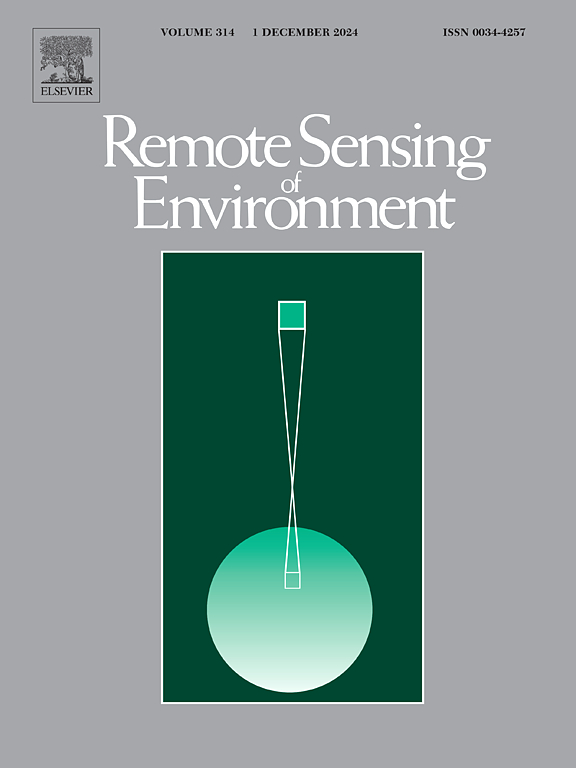Using full-polarimetric SAR data to characterize the surface sediments in desert areas: A case study in El-Gallaba Plain, Egypt
Gaber, Ahmed , Soliman, Farouk , Koch, Magaly , El-Baz, Farouk
2015-06-01 null null 162(卷), null(期), (null页)
Mapping and characterizing surface sediment of desert environments in terms of surface texture and grain sizes provide important information on the geomorphology and depositional history to assess their potential for economic development. Accurate maps of surface sediment are often not available at the desired scales using conventional field surveys. Optical and radar remote sensors are increasingly used as an alternative method for rapid delineation and classification of surface sediments. However, each sensor provides different levels of information and accuracy. In this research work, six datasets (ALOS/AVNIR-2, ASTER, AVNIR-2/PALSAR, ASTER/PALSAR, quad polarized ALOS/PALSAR and quad polarized Radarsat-2) were prepared to run unsupervised and supervised classifications to compare their accuracy for mapping surface sediment in the non-vegetated El-Gallaba Plain of the Western Desert of Egypt, particularly in terms of grain size and surface roughness. The accuracy level of all classification outputs, as well as the official geologic map, in comparison with the reference field information is empirically evaluated using the standard accuracy assessment method (confusion matrices). The best overall accuracy and dataset is the supervised classification using the complex coherence matrix [T-3] of the full polarimetric Radarsat-2 which is 96.43% with Kappa coefficient of 0.929. Therefore, the zonal statistics method is applied between the final supervised classification map with its five classes and the generated Entropy (H), Alpha (alpha degrees), Anisotropy (A) and the Shuttle Radar Topography Mission (SRTM) to extract information regarding the polarimetric response as well as the elevation of each sediment class. In addition, the polarization signatures of these five classes are extracted in order to examine their scattering mechanism and to distinguish the differences between them in terms of differences in their surface roughness and grain sizes. In addition, the low frequency ALOS/PALSAR data reveal a set of linear features that are hidden under windblown sand and are not visible in the field or in other datasets. These hidden lineament features were confirmed in the field by a ground penetrating radar survey using 100 MHz shielded GSSI antenna. The GPR profiles show very clear discontinuities in the subsurface layers, which are covered by a thin sand sheet Furthermore, the complicated depositional history of these surface sediments is proposed based on field work and remote sensing analyses. Consequently, the results show that El-Gallaba Plain has high potential for agricultural production using its groundwater resources. (C) 2015 Elsevier Inc. All rights reserved.
相关推荐
- An Integrated Approach to Unravel the Structural Controls on Groundwater Potentialities in Hyper-arid Regions Using Satellite and Land-Based Geophysics: A Case Study in Southwestern Desert of Egypt [2015-06-01]
- Using Remote Sensing and GIS-Based Frequency Ratio Technique for Revealing Groundwater Prospective Areas at Wadi Al Hamdh Watershed, Saudi Arabia [2015-06-01]
- Fusion of Remote Sensing Data Using GIS-Based AHP-Weighted Overlay Techniques for Groundwater Sustainability in Arid Regions [2015-06-01]
- Examining the Impact of Different DEM Sources and Geomorphology on Flash Flood Analysis in Hyper-Arid Deserts [2015-06-01]
- Modeling Flash Floods and Induced Recharge into Alluvial Aquifers Using Multi-Temporal Remote Sensing and Electrical Resistivity Imaging [2015-06-01]



